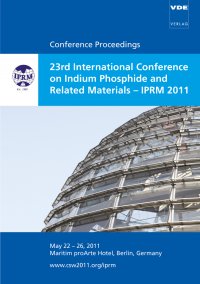Thermal Dissipation In InP Based Optical Lasers and Amplifiers
Conference: IPRM 2011 - 23th International Conference on Indium Phosphide and Related Materials
05/22/2011 - 05/26/2011 at Berlin, Germany
Proceedings: IPRM 2011
Pages: 4Language: englishTyp: PDF
Personal VDE Members are entitled to a 10% discount on this title
Authors:
Jacquet, Joël; Faugeron, Mickael; Abner, Yannick; Choffla, Manish (SUPELEC, LMOPS Laboratoire Matériaux Optiques Photonics et Systems, Metz, France)
Faugeron, Mickael (THALES AIR SYSTEMS, Division Systèmes Aériens, Hameau de Roussigny, 91470 Limours, France)
Dijk, Frédéric Van; Brenot, Romain (ALCATEL-THALES III-V Lab, Campus Polytechnique, 1, av Augustin Fresnel 91767 Palaiseau, France)
Abstract:
In a semi-conductor optical amplifier (SOA) or a laser, the behavior of the device can be effected the temperature elevation due to high current injection level in the chip and a limited efficiency. For example, the optical output power of a laser or the optical gain in a SOA is reduced when the temperature of the junction increases. This latter can be controlled or monitored thanks to a thermo-electronic cooler (or a Peltier element) and a thermistor. In this paper, we calculate the thermal dissipation in semiconductor Optical Amplifier and laser. We investigate the effect of the material composition, the number of wells, the type of structure (Buried or Ridge), on the thermal resistance of the component and try to extract some rules towards minimization of temperature elevation. The influence of heat repartition inside the wells has been evaluated as well as the use of thick asymmetric cladding layer in the structure. In the latter case, optimization of layer composition and waveguide dimension has been performed.


